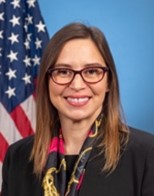

GRAA NEWSLETTER
P.O. Box 1184, Greenbelt, MD 20768-1184
| August 2024 | https://GoddardRetirees.org | 40th Year of Publication |
UPCOMING LUNCHEONS: We meet at 11:15 AM on the 2nd Tuesday of each month at the American Legion Post #136 at 6900 Greenbelt Road. Reservations are required; please contact graalunch@gmail.com (preferred) or call 410-709-8889 before Thursday, August 8.
COMMENTS FROM TONY COMBERIATE AND CARL STAHLE
“GSFC Communication and Navigation - A Decade of Excellence”
Bob Menrad, Goddard’s Associate Director of Flight Projects for Exploration and Space Communications (Code 450), discussed the Exploration and Space Communications (ESC) Network, what it is, how it has advanced over the last decade, and how it engages beyond NASA. Goddard has always managed NASA communications since inheriting NRL’s Minitrack System, starting the Manned Spaceflight Network in 1961, establishing the Space Network with the TDRSS satellites in the 1980s, to the Near Earth Network in the 1990s, and now with the Near Space Network. This latest network consists of several segments: a Launch Communications Segment to support the Artemis Space Launch System, the Near Space Network Initiative for Ka-band Advancement (NIKA) which operates at S-band, X-Band, and Ka-band and supports users out to two million kilometers and data rates up to 4 Gigabytes per second (Gbps), and Optical Ground Stations. More Low-Cost Optical Terminals (LCOT) will be needed to develop an advanced optical capability. In 2016, the Technology Enterprise and Mission Pathfinder Office (TEMPO) was established to organize, incubate, and infuse mission-enabling communication and navigation technologies. These technologies include Optical and Quantum Communications, Delay/Disruption Tolerant Networking to overcome communication delays and disruptions, and LunaNet, which will bring internet-like capabilities to the Moon and can be extended to Mars. LunaNet will lay the foundation for a Solar System Internet. Optical communications, using infrared light, enables faster, lighter, and more efficient communication to multiple ground stations. LCRDx, an Experimenter’s Program, was launched in 2021 and conducted over 1,300 experimental configurations to refine optical technologies, increase knowledge and identify future applications. NASA’s optical demonstration missions include: LLCD (622 Mbps from the Moon); LLRD (1.2 Gbps from Geosynchronous Orbit); TBIRD (200 Gbps from Low Earth Orbit); DSOC (200 Mbps from Deep Space); ILLUMA-T (1.2 Gbps to LCRD); and O2O (200Mbps from the Moon). TBIRD is in the Guinness Book of World Records for the highest data rate from space to Earth. In the area of Search & Rescue, Goddard provides technical expertise to the International Cospas-Sarsat, which has enabled the development of multiple emergency location beacons for explorers in need all around the world.
Bob’s ESC Office is pioneering the change to lead Goddard into the future by actively fostering a commercial network, soliciting government partnerships, creating a framework for a Solar System Internet, consolidating government-owned assets, continuing Technology Evolution, building a Virtual Network Manager for service management and data transport, optimizing the JPL/GSFC network relationship, and increasing collaboration with Goddard’s Information Technology and Communications Directorate (Code 700) to secure both ESC and Code 700’s roles in communication and cloud services. The Near Space Network will provide services, through both government and commercial providers, which will accommodate the growing capabilities of industry for missions in Low/Medium Earth Orbits, Highly Elliptical Orbits, Cislunar Orbits and Sun-Earth Lagrange Points. The Near Space Operations Control Center which provides these services, like its predecessor, is located at Goddard.
Goddard Center Director and Interns will Attend our August 13 Luncheon
We are delighted to welcome our new Goddard Center Director, Dr. Makenzie Lystrup, to our August 13 luncheon to share the current and future vision for our Center — Goddard 2040. We will also have a few of Goddard’s interns and their mentors attend to introduce themselves and the work they did this summer.
Goddard 2040 is the center’s strategy to face and solve NASA’s toughest and broadest science, engineering, and technology challenges now, in 2040, and beyond. The strategy calls for transformation and innovation in all of Goddard’s mission areas while also focusing on the mission enabling work – modernizing our campuses, expanding partnerships, and fostering a culture of inclusion and curiosity — that will posture us for future success. Goddard 2040 strategy implementation comes at a time of overall agency transformation, guided by NASA 2040, along with budget challenges that have required difficult but necessary decisions impacting both mission work and members of the workforce (at Goddard and across NASA/the federal government). The challenges of today underscore the need to transform and innovate, and it’s the people of Goddard who are going to deliver on that need.
DIRECTORIES AND NEWSLETTERS. Send your email address to goddardretirees@gmail.com to get our monthly Newsletters, which include synopses of the talks, special community announcements, and obituaries. Past Newsletters and links to videos of the talks are on our website https://goddardretirees.org. Multi-month abstracts of Newsletters are mailed to the retirees with only residential addresses in our files. We depend on retirees to furnish their home addresses to be listed in the biennial GRAA Membership Directories; only available as mailed hardcopies to members. These mailings are supported by donations to GRAA, P. O. Box 1184, Greenbelt, MD 20768-1184.
TREASURER’S REPORT: Treasurer Jackie Gasch received donations from Ron Browning, Charles Woodyard and Richard Weiss in memory of Bob Phillips.
FROM THE GODDARD ARCHIVES: On August 9, 1969, a Delta rocket launched OSO-6, the sixth of eight Orbiting Solar Observatories. It discovered three hard X-ray events coincident with gamma ray bursts. It operated on orbit from August of 1969 till January of 1972.
REMEMBERING OUR FORMER COLLEAGUES
Dr. Peter Chee Chen, 78, passed away from a stroke. He was a distinguished NASA scientist and advocate for space exploration. Born on October 10th, 1945 in Chendgu, Szechaun (China), Peter obtained his PhD in astronomy from Case Western Reserve in 1979. As a postdoctoral fellow at the University of Texas, Austin, he worked with Dr. Robert Tull to improve the Coudé Spectrograph at McDonald Observatory and with Dr. David Evans to develop high-speed portable microprocessor-based photometers for lunar occultations. From 1983-1996, he was involved in developing software, testing, calibrations, and supporting mission operations for the Ultraviolet Imaging Telescope at Goddard.
Patricia Alice Ross, 74, died at home in North Ogden on July 1, 2024. Pat was born on June 1, 1950 in Brooklyn, NY. She received a degree in data processing from George Mason University in Fairfax, VA and worked at the Goddard Space Flight Center.
Dr. Barry Schlesinger, 81, of Silver Spring, Maryland, passed away on June 19, 2024. He was an astrophysicist and among his other positions was a coordinator at the NASA Science Office of Standards and Technology (NOST) Flexible Image Transport System (FITS) at Goddard. FITS is used for the transport, analysis, and archival storage of scientific data sets.
Robert C. Wright , died on December 22, 2023. He worked in the Electronics Systems Branch in the Engineering Directorate at Goddard.